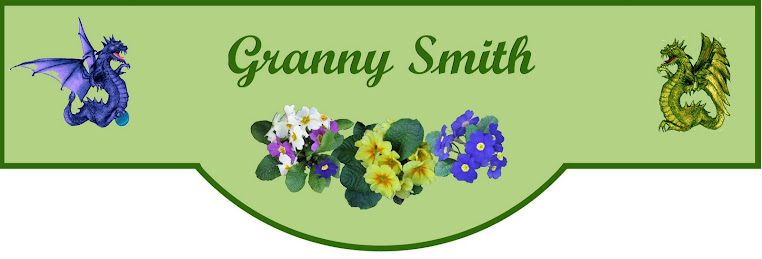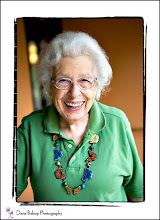 Here Grandson Johnny Smith shows
Here Grandson Johnny Smith shows
a tiny harmless snake to cousin Ruthie.
For a while Johnny thought he would become a herptologist.
THE SERPENT IN THE GARDEN
Serpent has a connotation of wickedness. We all know what one of them did to Eve.
But why should that reputation extend to the ordinary garden variety of snake, that harmless shy little creature that scurries away when confronted by humans? The snake helps keep down the insect population intent on eating our plants. In its larger manifestations it devours one of humanity's greatest enemies, the rodent.
According to psychologists, a child of a certain age shows automatic fear of snakes. Perhaps it is because of the snakes startling mode of locomotion, that legless slither through the grasses. In much of the world that fear remains part of the culture, resulting in indiscriminate destruction of any casually met reptile. By hoe, by boot, by gun, snakes are decapitated, smashed, shattered, eliminated.
Why, then, do I have such fond childhood memories of snakes? My first memory of a snake is of one my father caught for me when I was about four years old. My grandfather was paying us one of his rare cross-country visits at the time, and he and my father hovered over me as I let the cunning little striped garter snake wind in and out between my fingers. It felt like reticulated ivory. It looked like the ribbon candy I only saw at Chistmas.
I loved it instantly.
The greatest credit for my non-fear, however, goes not to my father nor my grandfather but to my mother. For my sake she suppressed her reaction of complete horror. She had a true snake phobia. All her life she had nightmares about snakes. They were to her the epitome of everything frightening and repulsive. Only years later did I realize that the mere knowledge of a snake nearby could set her to trembling uncontrollably.
I continued to like snakes, having them as pets at various tines. They were not allowed in the house. I learned about poisonous snakes--in California that meant rattlesnakes--and I developed a reasonable caution in approaching unknown snakes or hiking through snake-infested areas.
Then I went to college and, in the course of time, fell in love with the man to whom I am still married sixty-six years later.
He might have been known for his brilliance as an engineering student, by his beautiful singing voice, by any number of admirable things, but to most fellow students his single most striking attribute was that his pockets always held a collection of snakes and lizards. He was generous with them; he would lend me fence lizards to wear on my sweaters, or beautiful black-and-white-ringed California king snakes to while away the time in a less-than-absorbing class. This caused me a few problems, such as the time I forgot to remove the lizards from my sweater when being interviewed by a poetry professor for entrance into a special class. He gave one horrified look and expressed the opinion that we might be personally incompatible.
On the first Christmas after our wedding my husband was teaching at Tufts college in Boston. We were very poor and we were far from our western homes. I was enrolled at Tuft's as an undergraduate and had no personal income. I wanted to give Otto something very special, but I didn't want to spend his money for it. Christmas Eve found us still shopping in Harvard Square. I had exactly one dollar in my pocket. In the window of one of the book stores was displayed a beautifully illustrated copy of Ditmar's Snakes of the World. It would be the perfect gift for Otto if only I could afford it. Foolish thoughts! But what’s wrong with pricing your dreams? I went in and asked. By some miracle (or publisher’s indiscretion) that over-sized hard-cover coffee-table edition in full color cost exactly one dollar.
Lacking funds for luxuries such as movies, we spent our winter evenings reading the book aloud and thus becoming rather knowledgable about what had been heretofore just interesting pets.
When our daughter was about two years old my husband and I developed, for schools, a lecture series--called Bats in the Belfry--about various unusual pets that we had had. To add interest we would bring a selection from our current home collection of salamanders and newts, frogs, and most popular with the children, a beautiful large snake, a black racer, about five or six feet long. Candace, our daughter, was presumably of about that age at which children show an automatic fear of snakes. But she hadn't read the textbooks. One of her favorite activities was to drape the snake over her shoulders and parade around the yard. The black racer is a semi-constrictor. That meant that her snake would take a firm grip of her shoulders with his mid-section then carefully lift head and tail to prevent their erosion from ground friction. The snake seemed to enjoy the ride, but various neighbors expressed horror and disapproval.
My mother apparently felt that by hiding her fear of snakes from me that she had earned the right to be completely honest with my children. They were left in no doubt that Grandmother was terrified of snakes.
My oldest son was fond of snakes and usually had one resident in his basement room: nice little snakes, garter snakes, king snakes, rubber boas. When he was about seven my mother came to stay with the children while my husband and I went on a trip.
Otto Joe couldn't really believe that his Grandmother would object to so pretty a little pet. After much thought, he came to her and said, “Grandma, you wouldn't be afraid of just a little tiny snake, would you? Like this?" And he produced his small garter snake from behind his back. According to my Mother (and confirmed by my children) her scream could be heard by the neighbors.
My grandson, Joe, when a young teen-ager, used his summer earnings to buy a boa constrictor, which he named “Richter.”
Richter lived in a large terrarium with an electrically heated rock to keep him comfortable. He was free to crawl up over the sides of the terrarium at any time, but he generally preferred the comfort of his heated rock. Periodically, however, he would lazily slither forth into the room on a foraging expedition. At this time the cat was removed to another location (although it never was determined who was a greater menace to whom in a cat-snake confrontation), and it became incumbent on Joe to come up with suitable fare for a hungry five-foot boa.
Mice were bought for this purpose. They were too cute. Joe couldn't bear to feed them to Richter. Baby chickens were the next choice. Joe was too tender-hearted|.
The next time we visited my son’s home, we found a large and flourishing colony of white mice and a half-grown rooster that roamed the house and had established a working relationship with the cat. Richter had been donated to the science class at the high school, which was thereafter responsible for his board.
Now we come to granddaughter Anna Phyllis, my namesake and the youngest member of the Smith clan. She was two years old and adorable at the time of which I speak (she is now a college student – still adorable). She liked attention and hugging, and had learned that if she jumped across a room saying “Hop! I'm a little bunnie,” that her mother will swoop her up and kiss her. Then she and her older brother Johnny and her father found a pretty garter snake. Her father is the afore-mentioned Otto Joe, unsuccessful evangelist to his grandmother. They all made much of the little snake. Anna was obviously convinced that here was something even cuter than a rabbit. The next time she needed attention she wiggled into the room, mouth already puckered for a kiss, and said, “I’m a little snake.”
It’s all in your point of view. After all it was in Paradise that Eve encountered the serpent. And my paradise also has tended to have snakes winding through it, like tendrils on the decorative initial of an illuminated manuscript, tying together my loves: my father, my husband, my children, my grandchildren, and, by her forebearance, my mother.
I am thankful for the serpent in my garden.


 On the way back home, when we reached the crest of the mountain, the bay area was spread out below us, a blaze of lights on this exceptionally clear and calm night, with reflections on the water of the bay.
On the way back home, when we reached the crest of the mountain, the bay area was spread out below us, a blaze of lights on this exceptionally clear and calm night, with reflections on the water of the bay.

















